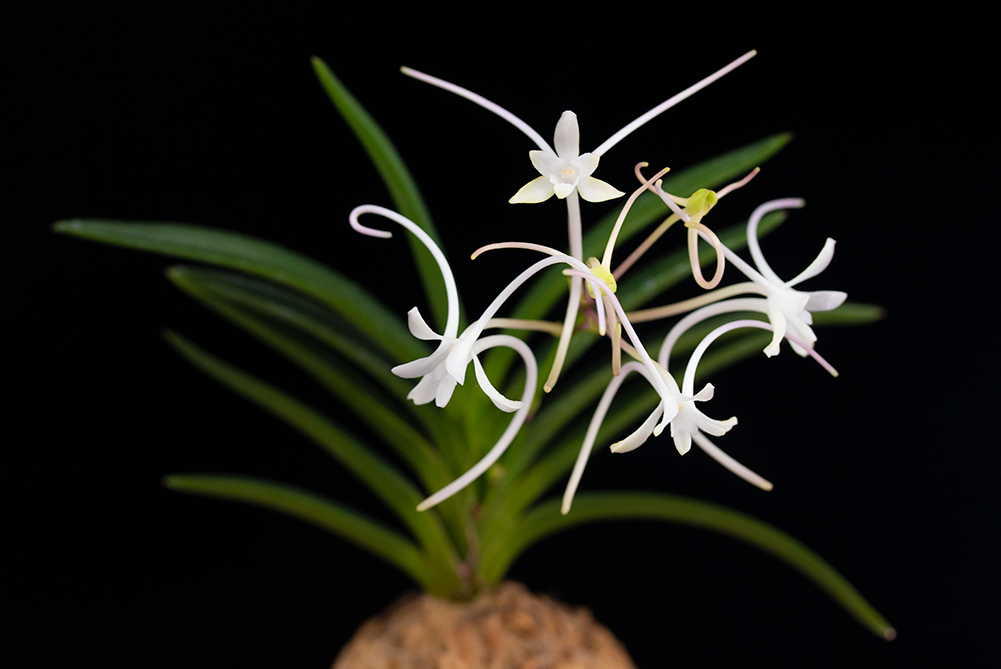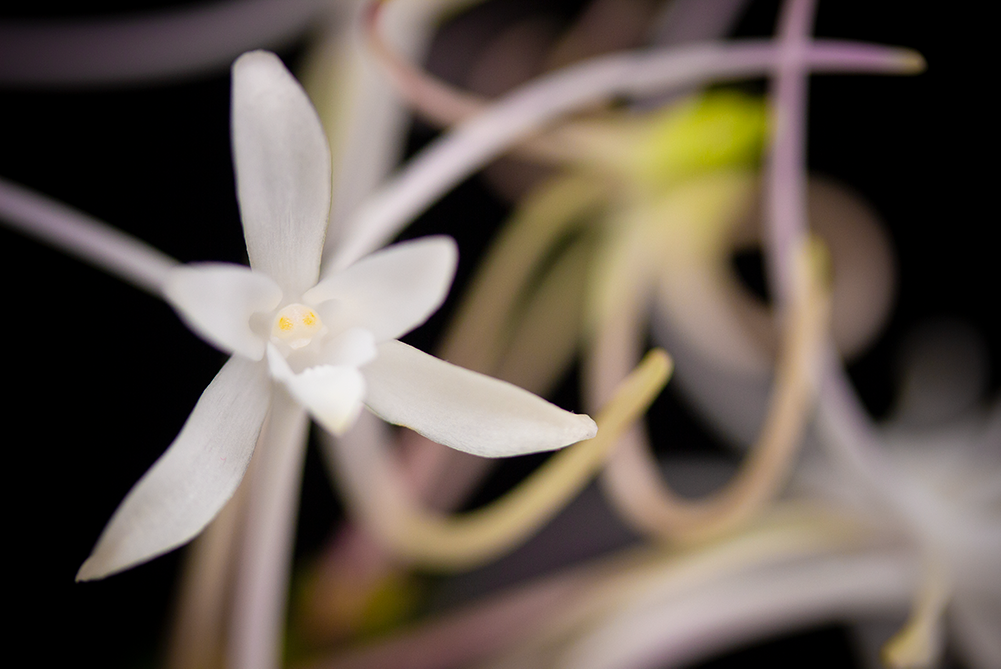


Donate Now
and become
Forum Supporter.

Many perks!
<...more...>


|

12-06-2018, 10:35 PM
|
|
Senior Member
|
|
Join Date: Aug 2011
Posts: 450
|
|
 Out of season, but still very welcome, Neo. Manjushage 曼珠沙華
Out of season, but still very welcome, Neo. Manjushage 曼珠沙華
Last edited by Hakumin; 12-23-2018 at 03:42 AM..
|
|
Post Thanks / Like - 2 Likes
|
|
|
|
|

12-06-2018, 11:32 PM
|
|
Senior Member
|
|
Join Date: Jan 2018
Location: Jersey Shore
Posts: 538
|
|
Hakumin,
Do you know whether all N Manjushages are the result of selfing, backcrossings, and sib crossings of a single plant or whether several were found in nature?
|

12-07-2018, 12:36 AM
|
|
Senior Member
|
|
Join Date: Aug 2011
Posts: 450
|
|
Quote:
Originally Posted by Shoreguy

Hakumin,
Do you know whether all N Manjushages are the result of selfing, backcrossings, and sib crossings of a single plant or whether several were found in nature?
|
Some are the result of selfings, some are result of sibbing, some are divisions of the original. The original was found in Korea among the seed grown offsprings of a plain Amami plant.
In regards to the seed propagation of Manjushage, my sources in Korea and Japan state that approximately 10% or fewer of Manjushage seedlings will carry three spurs.
Mine is not an original and I'm uncertain of its exact path of relationship to the original Manjushage, but it was selected for its good flower shape, it's thicker, stronger peduncles that prevent the flowers from drooping, stocky leaves and pink root tips.
There is a different three spur plant called Kintaikan 錦帯冠 that was originally found in the wild in Yamaguchi prefecture. It's not commonly seen in the market though.
Last edited by Hakumin; 12-07-2018 at 12:50 AM..
|
|
Post Thanks / Like - 1 Likes
|
|
|
|
|

12-07-2018, 12:56 AM
|
|
Senior Member
|
|
Join Date: Jan 2018
Location: Jersey Shore
Posts: 538
|
|
Thank you for your response.
I would think someone would try crossing the two to see whether a higher percentage of the offspring resulted in triple spurs or perhaps some other feature improving on the two varieties.
|

12-07-2018, 01:05 AM
|
|
Senior Member
|
|
Join Date: Aug 2011
Posts: 450
|
|
Quote:
Originally Posted by Shoreguy

Thank you for your response.
I would think someone would try crossing the two to see whether a higher percentage of the offspring resulted in triple spurs or perhaps some other feature improving on the two varieties.
|
I believe someone had tried, and the results were the same.
The triple spur trait is strange and very much non-mendelian in its inheritance patterns according to what the breeders have told me. For example, it seems that:
- Selfing and sibbing results in about 10% of the offspring with three spurs.
- Outcrossing Manjushage with other varieties, regardless of whether it's a seed or pod parent, results in about 10%.
- Selfing, sibbing, or outcrossing the outcrossed three spur offspring of Manjushage, yet again results in about 10% of the offspring with three spurs.
- Seed propagation of a single spur offspring of Manjushage never results in three spurs.
Last edited by Hakumin; 12-07-2018 at 01:07 AM..
|

12-07-2018, 01:11 AM
|
|
Senior Member
|
|
Join Date: Jan 2018
Location: Jersey Shore
Posts: 538
|
|
When you say the results were the same, are you just focusing in on percentages?
Ok but forgetting about percentages, it does appear that the spurs are thicker on the other variety and perhaps that could be transmitted by crossing to Manjushage.
Last edited by Shoreguy; 12-07-2018 at 01:15 AM..
|

12-07-2018, 01:29 AM
|
|
Senior Member
|
|
Join Date: Aug 2011
Posts: 450
|
|
Quote:
Originally Posted by Shoreguy

When you say the results were the same, are you just focusing in on percentages?
Ok but forgetting about percentages, it does appear that the spurs are thicker on the other variety and perhaps that could be transmitted by crossing to Manjushage.
|
I was speaking strictly of the percentages of inheriting three spurs on the two upper inner whorl petals.
The flowers on Kintaikan seem to be larger and the flowers themselves seem to be slightly differently shaped. I have never seen one in person or seen more than a handful of photos so I'm not 100% sure either. The written descriptions mainly concentrate on the differences in vegetative form between Kintaikan and Manjushage. |
|
Post Thanks / Like - 1 Likes
|
|
|
|
|

12-11-2018, 11:46 AM
|
|
Member
|
|
Join Date: May 2012
Location: London
Posts: 81
|
|

Very nice Manjushage, and thanks for the breeding results.
My first thought was two genes involved as this can give genotypes at 6 and 12 %, but I found it impossible to come up with a genotype that could possibly give the results you report.
There is a non-Mendelian mechanism called allele conversion that could give something close, but it cannot produce the equivalent results between selfings and outcrosses. Allele conversion works as follows. Assume the three spurred phenotype is produced by a single dominant mutant allele X, and where the wild type is x. Manjushage would have to be heterozygous so : Xx. Allele conversion can happen when the mutant allele doesn't line up well with it's wild type during chromosome alignment in meiosis, say due to a segment deletion/insertion or truncation of the mutant allele. This triggers one of the DNA repair mechanisms called homologous recombination repair in which the mutant allele is repaired using the wild type as a template. This reduces the proportion of gametes carrying the mutant allele.
So for example if the proportion of mutant alleles in the gamete population is reduced from 50 % to 5% you would get, in 400 seedlings, something like:
selfing: xx (361) xX (38) XX (1)
outcross: xx (380) xX (20)
Although the triple spurred offspring in the selfing would be approx double that in the outcross 10% versus 5% (in theory), the noise in the system would mean over successive crosses the proportion would vary such that the frequency in selfings would overlap with that found in outcrosses because the mutant reduction won't be exactly the same in each set of gametes. Also in selfings you have egg cells as well as pollen and the reductions may not be exactly same in both. When measuring low proportions the intrinsic statistical error works against one because its a greater proportion of the figure you are counting.
There is one interesting prediction with this model, the rare XX individuals, if viable, would be a game changer for triple spur breeding as all the offspring would be triple spurred because the repair mechanism would not kick in at all! Even if this is the way it works and a neo breeder discovered an XX individual, would they share their discovery? It is possible that an XX individual might have an undesirable flower phenotype in the case of co-dominance and so wouldn't be selected for breeding even though in outcrosses this phenotype would disappear.

|

12-11-2018, 05:26 PM
|
|
Senior Member
|
|
Join Date: Aug 2011
Posts: 450
|
|
It could be something like that, and of course, the breeders I have spoken to are not geneticists, nor are they taking scientifically precise logs of the offspring.
It'd be fascinating to see some formal research done on neo characteristics...too bad there's really no viable financial motive to do so.
|

12-11-2018, 06:13 PM
|
|
Senior Member
|
|
Join Date: Jan 2018
Location: Jersey Shore
Posts: 538
|
|
Quote:
Originally Posted by Hakumin

It'd be fascinating to see some formal research done on neo characteristics...too bad there's really no viable financial motive to do so.
|
Not just 3 spur breeding percentages but also variegation inheritance and mutations, both breeeding and offshoot.
Not to overlook different variegational patterns on leaves of a single growth. |
|
Currently Active Users Viewing This Thread: 1 (0 members and 1 guests)
|
|
|
 Posting Rules
Posting Rules
|
You may not post new threads
You may not post replies
You may not post attachments
You may not edit your posts
HTML code is Off
|
|
|
All times are GMT -4. The time now is 04:28 PM.
|


































 Linear Mode
Linear Mode


